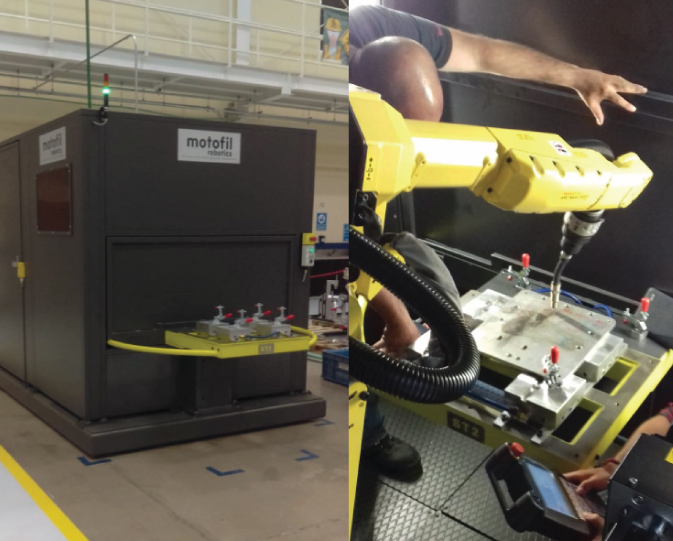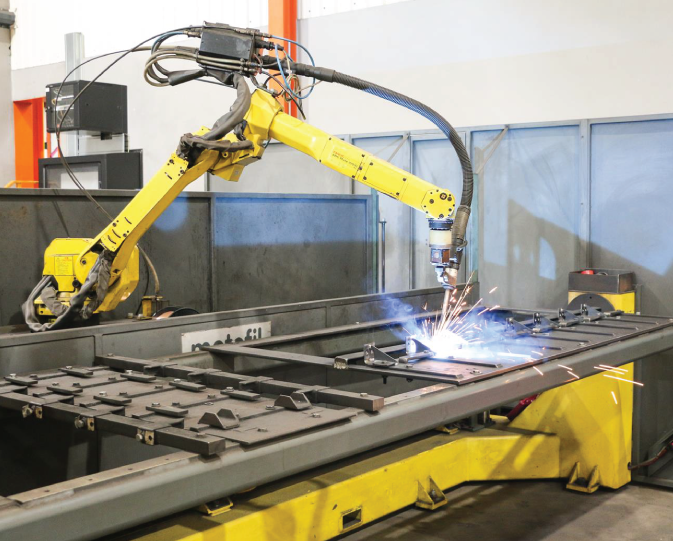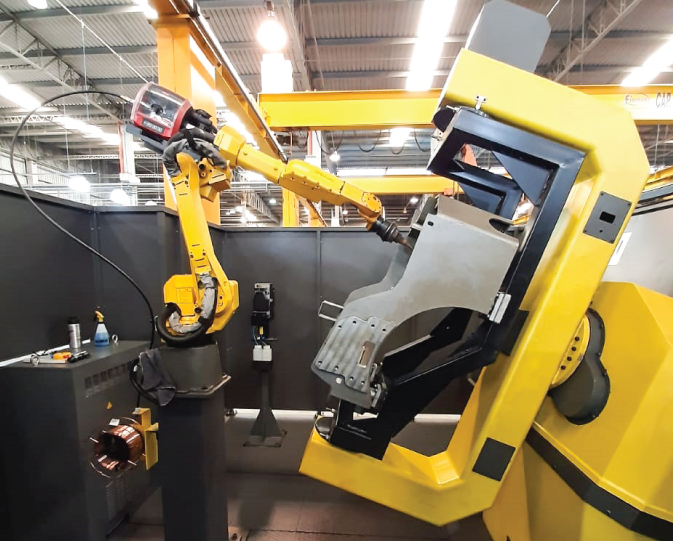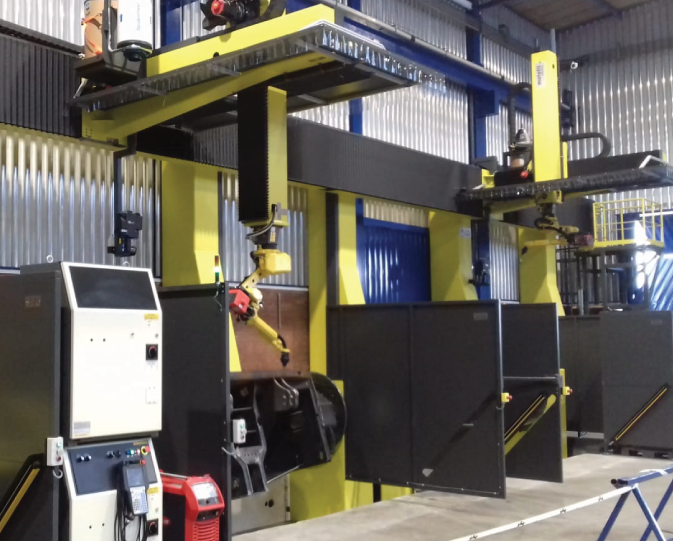09-november-2022
How to choose my first welding robot?
Robotic welding is almost an inevitability for most growing industries. With the lack of manpower and the increase in business volume, this step is a guarantee of productivity and quality. But which robot should I choose? In this article, we give an idea of how this new stage can be started.
Where to start?
First of all, it is necessary to analyze the business, get to know what is the main work we perform (large volumes or small production volumes? Parts with complex geometries or simple parts?), in which direction we want our company to go and the type of investment we are willing to make.
After these points have been clarified, we have the necessary information to start the process of looking for a welding robot.
"I will weld parts with simple geometry" - Standard solutions
In the case of welding parts with simple geometries, large movements are not necessary, because the robot has easy access to the welding points.
At Motofil, we have catalog solutions already prepared for some of these most common situations in the market.
Weldpro
Specially developed for welding small series of parts. Weldpro is easy to install, has low maintenance and is very compact, with a small footprint. It’s ideal for small productions.

Monoblock System
MIG/MAG robotic welding cells, consisting of a welding robot and two positioners, thus creating two work areas. The Monoblock System is a versatile equipment, ideal for welding parts such as heat exchangers; hospital furniture; metallic structures; small pressure tanks; irrigation systems; agricultural components; electrical cabinets; among many others.

5 Axis H-table Positioner
Its configuration with 5 axes of servo-controlled rotation, synchronized with the robot, gives it great freedom of movement. It is an ideal equipment for the production of bicycle components, such as frames, but also parts for the automotive sector, parts with complex geometry and hard-to-reach welding points.

"I will weld complex parts" - Custom-made solutions
As for the welding of parts with complex geometries, they have to be analyzed by our specialists so that they can develop the best approach to welding the part and producing it.
The best option will have to be studied and a custom solution made, but there are some guidelines that help to identify a solution.
High production volumes - multi/two-station solutions
Typically, high production volumes are associated with short cycle times. As there is a need for loading and unloading operators dedicated to moving the components, these solutions tend to be the most suitable to minimize waste of time and space, being widely used in the automotive industry.
Low production volumes - single station solution
When there are large parts and longer cycle times, the loading and unloading of the same can take longer to be done. Therefore, solutions with a single station are chosen, as is the case with cistern welding.
Special projects - Welding of Agricultural Components
This is a special solution designed for the agricultural sector for the simultaneous MIG/MAG welding of different components.
The robotic welding cell is made up of six workstations. Stations one and two consist of two fixed tables along with a six-axis robot manipulator. Both station three and station four are made up of a lathe-type positioner. The fifth station is used for loading and unloading, as well as the final finishing of the pieces, with a fixed table. At station six, we have a two-axis orbital positioner.
All these stations are accessible for two welding robots to move along a gantry.

Welding Column
The welding column, complemented by two rotating positioners, is an ideal solution for welding aluminum cisterns. This equipment is ideal for handling and welding large metal parts with demanding welding points.
MOTOFIL has more than 30 years of know-how in the development of robotic solutions, specific for different industries (metalworking, agricultural, renewable energies, metal structures...) and therefore is the right partner to start automating your production.
And will robots replace workers?
No.
Robots exist to make tasks easier and take care of the most dangerous functions for the health of workers. Furthermore, the increase in the use of robots these days has served to overcome one of the major problems of the metalworking industry: the lack of qualified labor.
A high quality weld requires skilled workers and at the moment the number of skilled welders available does not match the current needs of the industry. In the United States, for example, the American Welding Society (AWS) estimates that there will be a shortage of more than 375,000 welders by 2023. Also in Brazil and Europe, this shortage of workers is a more current phenomenon than ever before.
This is where welding robots come in, assuming these functions and taking their part solving this human resources problem at a global level.
But isn't a robot very expensive?
For many years, only large companies were able to automate welding and other production processes, as this was a very high investment.
However, that has changed.
Increasingly, small and medium-sized companies are opting for process automation and robotization, and welding is no exception.
In recent years, it is estimated that the initial investment in robotic welding has decreased by 30%, which has allowed greater democratization of access to robots.
Also due to the high performance and productivity of welding robots, their investment takes relatively little time to be recovered, thus having a very high ROI (return on investment).
In addition to all this, there is still some support for the modernization and investments of national industry, such as the Recovery and Resilience Plan (PRR), with the help of many institutes and agencies.
Ready to take your production further? Don't waste any more time and talk to our team now!
/ N/D